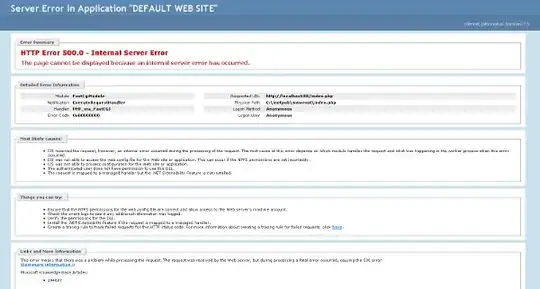I'm running PHP 5.3.1 on IIS 7.5 on Windows 7 Ultimate x64. I've been trying to make PHP connect to my local installation of SQL Server 2008 Express over ODBC using ADODB. At first I had trouble getting it to connect, because even after I added my local SQL server as a server DSN in the ODBC manager, I kept getting this error:
[Microsoft][ODBC Driver Manager] The specified DSN contains an
architecture mismatch between the Driver and Application
I asked about this on Stack Overflow and got an answer. In retrospect I probably should have asked that here, but I got my answer so I don't care. (Plus I absolutely loathe the fact that the trilogy sites are split in the first place, but that's another story...)
Anyways, after setting up the data source using %windir%\sysWOW64\odbcad32.exe instead, I seemed to make some progress. I am no longer getting that error I listed above. Instead, I am getting a seemingly much more evil error, namely this one:
Before I was just getting a simple PHP exception. Now my PHP script does the equivalent of segfaulting because it's apparently getting hung up on this 64-bit ODBC driver. Help! Connecting to a SQL Server should be a relatively simple and straight-forward task, so what do I need to do to get things working?
UPDATE: I'm starting a bounty because I really need to get SQL Server and PHP talking to each other soon. One poster suggested I check the Event Log, but that shows nothing, and another poster suggested I enable Failed Request Tracing, which I have done but I'm not so sure it provides anything telling. A copy of the error trace it provides can be found here (IE-only). I also have the (very basic) PHP script shown here. I've changed the name of the connection to "MYCOMPUTER," changed the name of the specific database/catalog to "MyDatabase," and hidden the password, but made no other changes.
A little background:
- My computer is called MYCOMPUTER (not really, but think of it that way)
- MYCOMPUTER is running 64-bit Windows 7 Ultimate with IIS 7.5
- MYCOMPUTER has PHP 5.3.1 installed (32-bit) handled through FastCGI
- MYCOMPUTER has 64-bit SQL Server Express 2008 installed
- The default SQL instance is called MYCOMPUTER\SQLEXPRESS
- There is a database called MyDatabase (again, the name is actually different)
- There is a System DSN set up called MYCOMPUTER (set up with the 32-bit ODBC Manager)
- There is a System DSN set up called MYCOMPUTER64 (set up with the 64-bit ODBC Manager)
If I try to connect to MYCOMPUTER in that script I linked to, I get that big scary 500 error. If I try to connect to MYCOMPUTER64 in that same script, I get the "architecture mismatch" error listed above. Either way it's not working. I need it to work. Please help.
